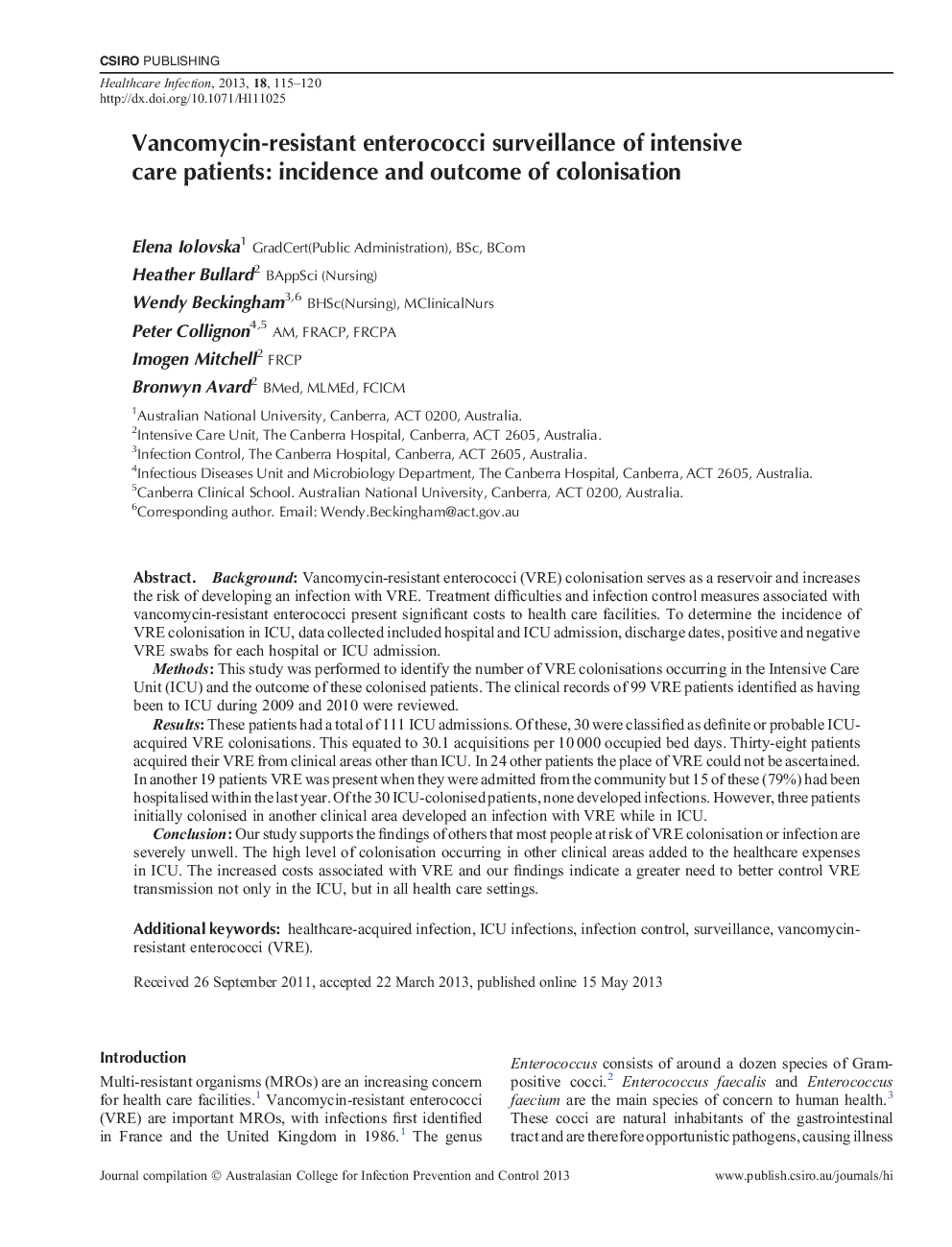| Article ID | Journal | Published Year | Pages | File Type |
|---|---|---|---|---|
| 2679646 | Healthcare infection | 2013 | 6 Pages |
BackgroundVancomycin-resistant enterococci (VRE) colonisation serves as a reservoir and increases the risk of developing an infection with VRE. Treatment difficulties and infection control measures associated with vancomycin-resistant enterococci present significant costs to health care facilities. To determine the incidence of VRE colonisation in ICU, data collected included hospital and ICU admission, discharge dates, positive and negative VRE swabs for each hospital or ICU admission.MethodsThis study was performed to identify the number of VRE colonisations occurring in the Intensive Care Unit (ICU) and the outcome of these colonised patients. The clinical records of 99 VRE patients identified as having been to ICU during 2009 and 2010 were reviewed.ResultsThese patients had a total of 111 ICUadmissions. Of these, 30 were classified as definite or probable ICUacquired VRE colonisations. This equated to 30.1 acquisitions per 10 000 occupied bed days. Thirty-eight patients acquired their VRE from clinical areas other than ICU. In 24 other patients the place of VRE could not be ascertained. In another 19 patients VRE was present when they were admitted from the community but 15 of these (79%) had been hospitalised within the last year. Of the 30 ICU-colonised patients, none developed infections. However, three patients initially colonised in another clinical area developed an infection with VRE while in ICU.ConclusionOur study supports the findings of others that most people at risk of VRE colonisation or infection are severely unwell. The high level of colonisation occurring in other clinical areas added to the healthcare expenses in ICU. The increased costs associated with VRE and our findings indicate a greater need to better control VRE transmission not only in the ICU, but in all health care settings.
